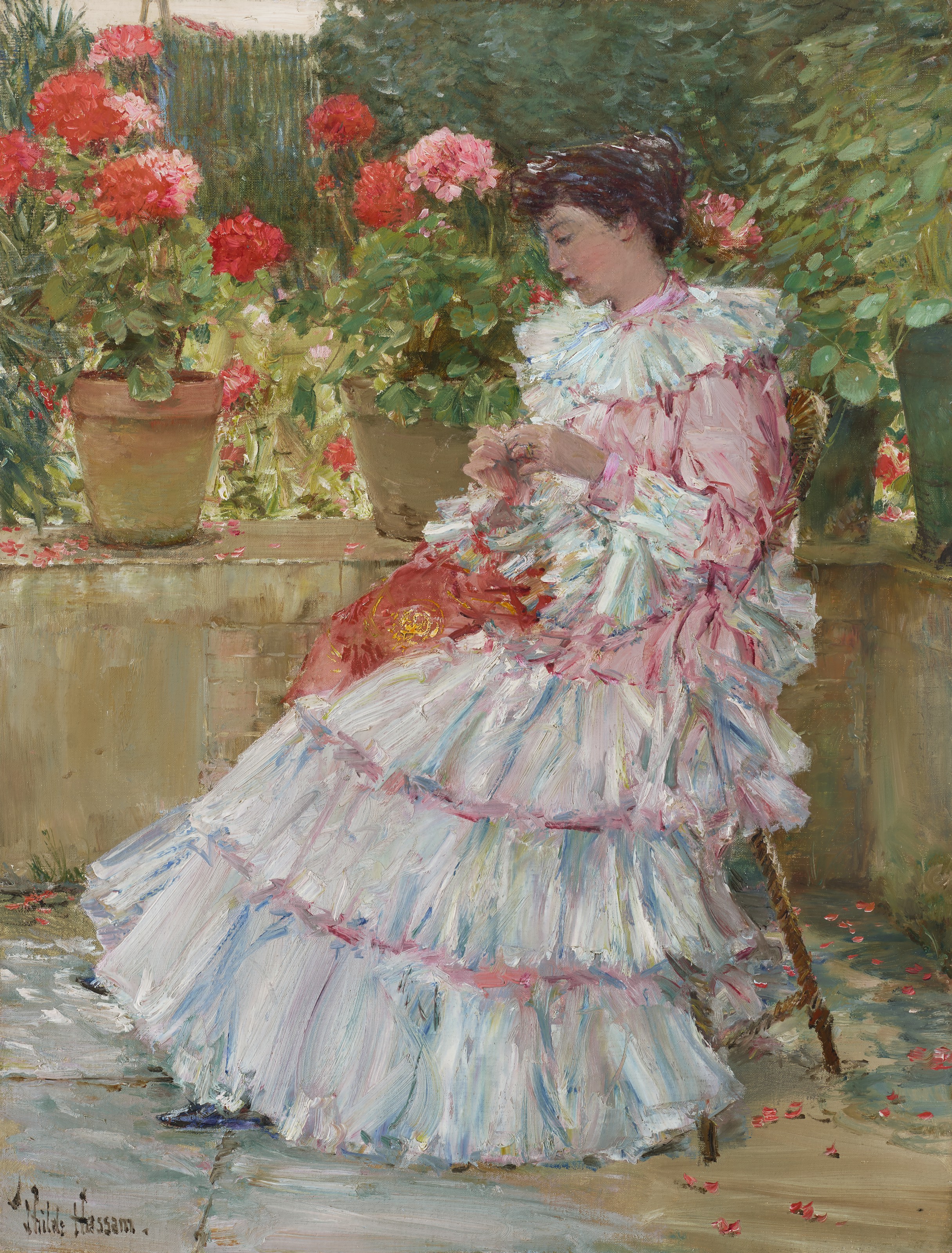Painted in June 1945, René Magritte (Belgian surrealist artist, 1898-1967) himself described the scene in L'utopie in his publication, Dix tableaux de Magritte précédes de descriptions, published the following year.
There, he explained that, 'The rose is alone on an island'..
This sense of the solitude of the flower, already emphasised by the span of the distant horizon and the vastness of the ocean, is thus reinforced by Magritte's statement and his own declared intention.
How did the rose reach this island?
René Magritte | L'utopie (Utopia), 1945
This strange and solitary bloom is a glimpse of the poetic and the mysterious, even the miraculous, and is all the more striking as an image of hope in the wake of the Occupation of Belgium, which had only recently ended.
The promontory and the rose in L'utopie appear to have been painted in the mock-Impressionist style that Magritte referred to as Surréalisme en plein soleil.
Where his earlier works had deliberately avoided a sense of 'style' in the rendering of their strange and incongruous subjects, he now added an extra layer of the incongruous by emphasising the painting's status as a subjective representation of the world, while also taking advantage of the association between Impressionism and Realism.
He thus introduced a tension between a style of painting associated with capturing a moment of fleeting 'reality' and his own surreal, poetic universe, while also providing a glimpse of sunlight during the dark days of the Second World War.
At the same time, he revelled in shocking even his most ardent followers by deliberately and irreverently adopting a style that was then associated with bourgeois taste.
Magritte's Surrealism was intended to jolt his viewers out of a complacent understanding of the world around them, but he was aware that his own admirers and followers had developed expectations of his works.
L'utopie and its sister-works of sunlit Surrealism shocked his viewers out of their complacent understandings of his pictures and of the universe alike.
The first owner of L'utopie was Achille Chavée, a writer, friend of Magritte and leading member of the Hainaut group of Surrealists who owned several of the artist's pictures.
During the period that L'utopie was painted, the pair collaborated extensively on a large exhibition of Belgian Surrealism that was held at the Galerie des Editions La Boétie in Brussels, an exhibition that was dominated by Magritte's own works, a fitting reflection of his importance to Surrealism in that nation. | Source: © Christie's
Rene Magritte in front of his painting, 1964 | Christie's
Dipinto nel giugno 1945, René Magritte (Artista surrealista Belga, 1898-1967) stesso descrisse la scena in L'utopie nella sua pubblicazione, Dix tableaux de Magritte précédes de descriptions, pubblicata l'anno seguente.
Lì, spiegò che "la rosa è sola su un'isola".
Questo senso di solitudine del fiore, già enfatizzato dalla distanza dell'orizzonte lontano e dalla vastità dell'oceano, è quindi rafforzato dall'affermazione di Magritte e dalla sua stessa dichiarata intenzione.
Come ha fatto la rosa a raggiungere quest'isola?
Questa strana e solitaria fioritura è uno scorcio del poetico e del misterioso, persino del miracoloso, ed è tanto più sorprendente come immagine di speranza sulla scia dell'occupazione del Belgio, che era appena terminata.
Il promontorio e la rosa in L'utopie sembrano essere stati dipinti nello stile finto-impressionista che Magritte chiamava Surréalisme en plein soleil.
Laddove le sue opere precedenti avevano deliberatamente evitato un senso di "stile" nella resa dei loro soggetti strani ed incongrui, ora aggiungeva un ulteriore strato di incongruo enfatizzando lo status del dipinto come rappresentazione soggettiva del mondo, sfruttando anche l'associazione tra impressionismo e realismo.
Introduceva così una tensione tra uno stile di pittura associato alla cattura di un momento di "realtà" fugace ed il suo universo surreale e poetico, offrendo anche uno scorcio di luce solare durante i giorni bui della seconda guerra mondiale.
Allo stesso tempo, si dilettava a scandalizzare persino i suoi seguaci più ardenti adottando deliberatamente e irriverentemente uno stile che era allora associato al gusto borghese.
Il Surrealismo di Magritte intendeva scuotere i suoi spettatori da una comprensione compiacente del mondo che li circondava, ma era consapevole che i suoi ammiratori e seguaci avevano sviluppato delle aspettative nei confronti delle sue opere.
L'utopie e le sue opere gemelle del Surrealismo illuminato dal sole sconvolsero i suoi spettatori dalla loro comprensione compiacente dei suoi quadri e dell'universo.
Il primo proprietario di L'utopie fu Achille Chavée, uno scrittore, amico di Magritte e membro di spicco del gruppo surrealista dell'Hainaut che possedeva diversi quadri dell'artista.
Durante il periodo in cui L'utopie fu dipinto, la coppia collaborò ampiamente ad una grande mostra del Surrealismo belga che si tenne alla Galerie des Editions La Boétie di Bruxelles, una mostra che fu dominata dalle opere dello stesso Magritte, un riflesso appropriato della sua importanza per il Surrealismo in quella nazione. | Fonte: © Christie's









































